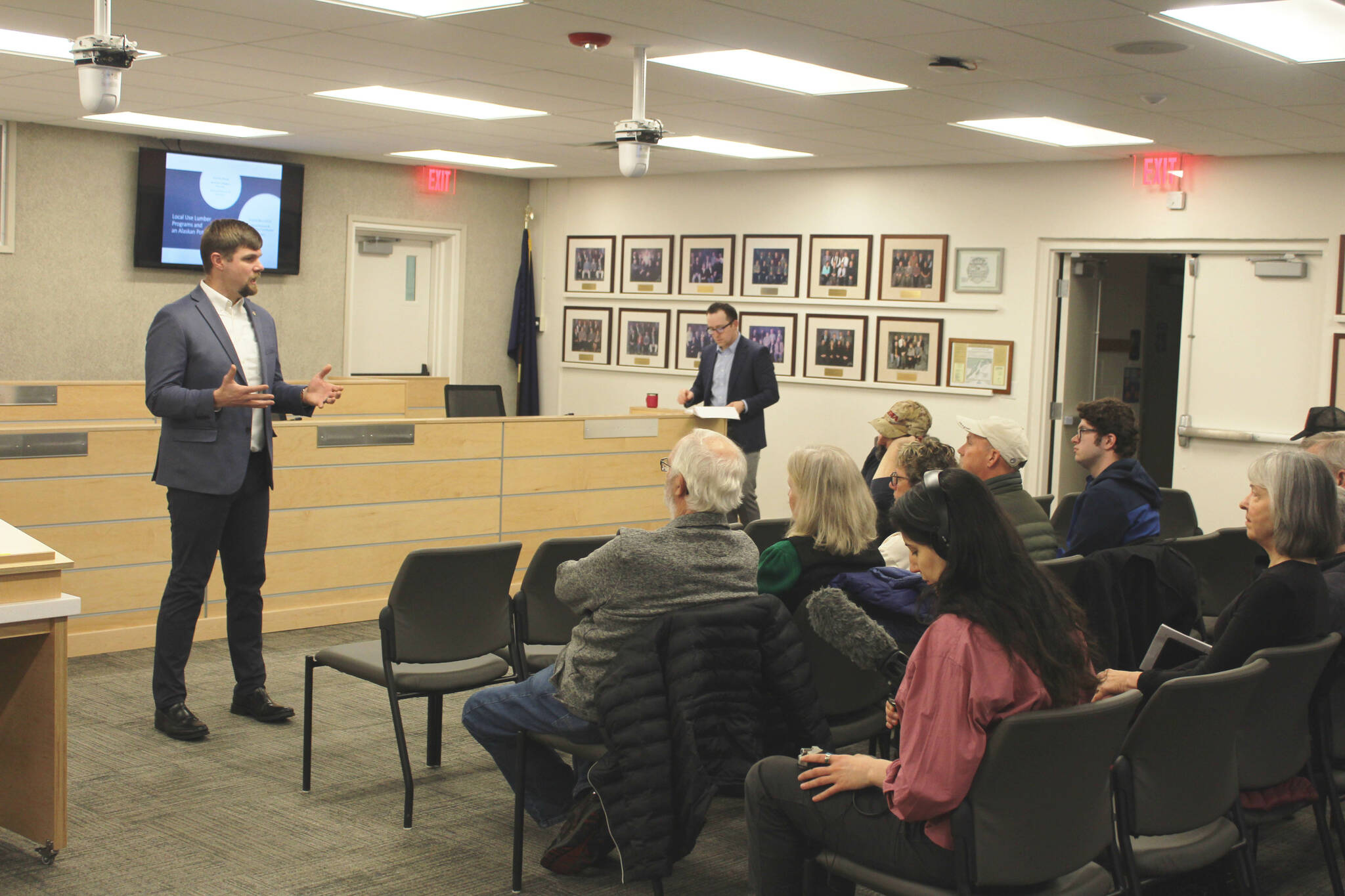New legislation introduced in the Alaska Legislature on Wednesday by Sen. Jesse Bjorkman, R-Nikiski, aims to make locally milled lumber more widely available for the construction of housing in Alaska.
The bill, if passed, would establish a lumber grade training program under the Alaska Division of Forestry that would train mill operators to grade lumber. The bill as introduced would require that the program be offered once per year, with the content, instruction qualifications and completion requirements prescribed by the division.
Upon completion of the grading program, to be offered for free over the course of a day, participants would receive a certificate good for five years. Per the legislation, the lumber graded and certified in accordance with the proposed regulations could be used for one-, two- and three-family dwellings in the State of Alaska.
The Alaska Division of Forestry would also be able grant grading certificates to people who already hold a current certification from a grading agency accredited by the American Lumber Standard Committee, Inc., the bill text says. Certificates may also be given to someone with a bachelor’s or postgraduate degree in “forest products or wood science and technology” or equivalent.
With the certificate, people who have successfully completed the course would be able to grade load-bearing dimensional lumber that they have milled. Dimensional lumber refers to wood cut to specific dimensions, such as a 2×4, while grading refers to a standardized way to determine wood quality.
Bjorkman said in a press release distributed by the Alaska Senate Majority caucus that the legislation is meant to create economic opportunities for small businesses, give people the chance to purchase local wood and potentially offer building materials at a lower price point than dimensional lumber in the Lower 48.
“It will also encourage higher value-added use of materials harvested from forest thinning and hazardous fuels reduction projects that would otherwise be piled and burned,” Bjorkman said in the release.
Certifying residents to grade their own lumber will eliminate the need for third-party grading agencies. The wood would need to conform to the Alaska Department of Natural Resources’ substitute equivalents for grading standards, but could ultimately be sold to an end user or contractor.
Key benefits of the program, the Senate Majority release says, would be to Alaskans in rural communities who want to reduce construction costs. Being able to use locally produced lumber for dwellings could also address housing shortages in Alaska communities.
Bjorkman said during a town hall event last Saturday in Soldotna that graders certified through the state program would not be permitted to sell their self-graded wood to retail outlets like Home Depot.
“What the lumber will be able to be used for is to sell to people that own or are building their home or contracting with other folks to build their homes, so that they can hopefully get a great quality product at a lower price,” he said.
Because local governments have their own building codes, those municipalities would need to adopt exemptions for lumber graded by someone who completes the proposed state class, the release says. The Alaska Housing Finance Corporation would also need to adopt a similar exemption.
S.B. 87 was read for the first time on Wednesday and was referred to the Senate Resources and Finance committees. Bjorkman said Thursday that there is not yet an estimate for how much it would cost the state to implement the program described in the legislation.
More information about S.B. 87 can be found on the Alaska Legislature website at akleg.gov.
Reach reporter Ashlyn O’Hara at ashlyn.ohara@peninsulaclarion.com.

